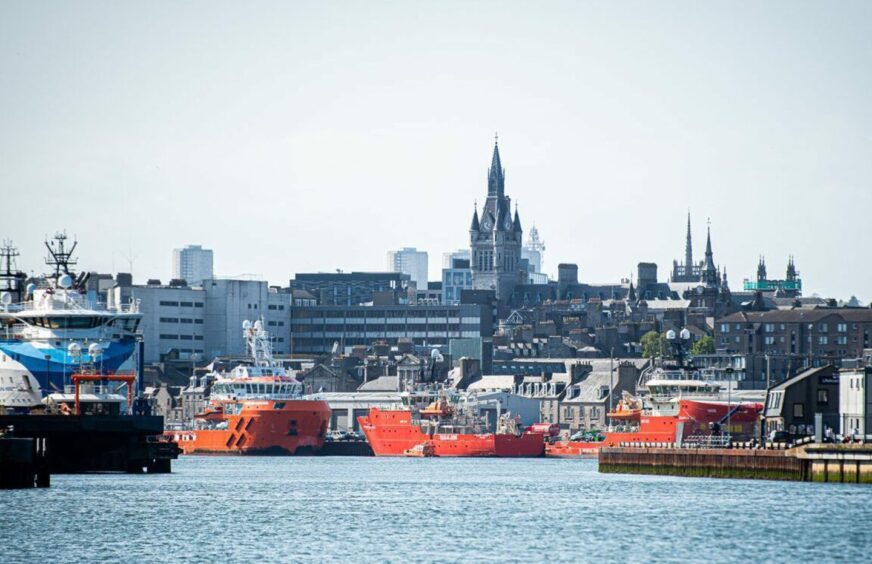
Aberdeen has been the oil and gas capital of the UK since the 1970s, however, the boom-and-bust nature of the industry has impacted the region.
Downturns in the oil and gas market have a wide-reaching impact in the Granite City with those working offshore for operators and for teir one contractors subject to job losses.
Supply chain firms in the north-east are also impacted by market trends as well as political and fiscal changes.
However, there are a number of jobs across Aberdeen that are seemingly unrelated to the oil and gas sector that are also hit when it’s penny-pinching time for North Sea firms.
EY ITEM Club’s latest Scottish Autumn Forecast report outlined: “Aberdeen is one of the few local authority districts in Scotland to have fewer jobs in 2023 than in 2010.
“During this time, it has lost nearly 18,000 jobs, equivalent to 10% of its workforce in 2010, largely due to the ongoing decline in the locally important oil and gas industry.”
It has been well-documented how the hydrocarbon industry has benefited Aberdeen, the population of the city was in decline before the oil and there was an unemployment issue across the country, both issues the hydrocarbon industry turned around in the Granite City.
High-paying jobs came to Aberdeen as oil and gas firms moved in, which not only benefited the people working in the industry but the local economy as well.
However, oil and gas is a boom-and-bust industry and as a result, the Granite City experienced its fair share of issues when the industry slumped.
Housing prices in the north-east have fluctuated as oil prices have risen and fallen over the years.
Chris Comfort, the Aberdein Considine partner, is an expert in property law and he explained how housing has been impacted by North Sea activity.
“I’ve studied house prices and the last thing I did was in 2019 and I explored all the way back to the previous oil recession in the late 80s in Aberdeen,” he explained.
“This has been a prolonged downturn whereas previously we’ve seen what I would call peaks and troughs and what seen is a substantial drop off in Aberdeen house prices.”
At the end of 2010, Brent oil was trading for around $95 a barrel and slumped to around $25 per barrel in 2020 as COVID lockdowns were rolled out across the UK.
The north-east is ‘forecast to continue to struggle’
In 2023 research conducted at the University of Aberdeen detailed both the positives and negatives of Aberdeen’s ties to oil and gas.
The work carried out by Daria Shapovalova, Tavis Potts, John Bone and Keith A. Bender pointed to the aforementioned upsides for the city but also the impact on the city’s previous industries.
Between 1977 and 1981 Aberdeen lost a quarter of its jobs in food processing and a fifth of its engineering, shipbuilding and textiles.
While new jobs were being created by oil and gas, the University of Aberdeen’s research indicated that many of these positions went to newcomers to the city.
However, In 1982, the whole of the North East was removed from regional policy assistance due to low unemployment. Despite traditional industries seeing a downturn, overall unemployment was low and no targeted measures were adopted at the time.
Between 1975 and 1991, some 15,000 new houses were built in Aberdeen, with even more being built in the north-east region.
Since then, oil and gas has been a pillar of Aberdeen’s economy, so much so that businesses out with energy lean on the industry for work.
Earlier this year Zoe Ogilvie, director of PR firm BIG Partnership, shared concern that firms like hers would be hit if oil and gas firms were to slash UK investment.
Ogilvie argued industry estimates that warned close to 35,000 jobs would be at risk between 2025 and 2029 fell short, and there would be “much more” among industries on “the periphery of oil and gas” such as her own business.
She said energy firms account for 75% of Big Partnership’s Aberdeen office as she claimed this would be the same for many services firms.
Throughout the timeframe used in EY’s latest report, the industry suffered mass job losses in the middle of the last decade, it was hit with uncertainty throughout the COVID-19 pandemic and has recently been contending with political and fiscal changes.
According to EY: “Aberdeen City and neighbouring Aberdeenshire are forecast to continue to struggle.”
Housing prices across the north-east
However, when comparing the state of housing in Edinburgh, Comfort said that historically Aberdeen has seen success while other Scottish cities slumped.
“We did a chart plotting Aberdeen versus Edinburgh, because from 2010 5o 2014 Edinburgh was relatively stagnant, having gone through depression as a result of the global economic crash in 2008, whereas Aberdeen was trending significantly upwards,” the property law expert commented.
“Aberdeen went from an average property price went from 2008 at £201,000 to 2014 when it was £251,000.”
However, since this period “there has been a significant fall off,” as Edinburgh has “really accelerated,” Comfort explained.
He said that in addition to being the capital city, demand for housing in Edinburgh has outstripped supply, which has also driven prices up.
Aberdeen and Aberdeenshire going forward
As Aberdeen saw 18,000 jobs disappear, employment in Aberdeenshire grew by 7%, lagging slightly behind the 8% average across Scotland.
In addition to this, post-COVID pandemic “Aberdeenshire saw a significant pick up” in housing interest “as a result of people wanting to have that open space,” Comfort commented.
Despite the uptick in jobs, the region is also facing tough times as employment is not set to grow in the back half of the decade, EY claimed.
The report outlined: “Aberdeenshire has a large manufacturing sector that is anticipated to decline in the future and against a backdrop of relatively weak average GVA [gross value added] growth of just 1.0%, employment is not expected to grow in the district over the 2025 to 2029 period.”
Looking to the next five years, Aberdeen is set to see a growth in GVA of 0.8%, however, investment in the city could impact this.
“Prospects could improve if investment into Aberdeen is significant and effectively targeted,” EY wrote.
“In support of this view, the city has been chosen to host the headquarters of Great British Energy, the UK Government’s new company to invest in clean, UK-derived energy and backed by £8.3 billion in government funding over this Parliament.
“The move forms part of the government’s plans to support clean energy in the North Sea and promote Aberdeen as Scotland’s clean energy capital.”
GB Energy and the transition to support Granite City
With the announcement that the UK’s state-owned energy firm is set to base its headquarters in Aberdeen, renewables may prove to give a boost to the north-east of Scotland.
Comfort pointed to the latest Scottish Government budget which unveiled plans for £150 million in capital funding for the offshore wind sector as Aberdeen gears up for work in renewables.
Finance Secretary Shona Robison announced plans to treble its investment in offshore wind throughout 2025 in the Scottish Government’s December budget.
The property Law expert commented: “I think Aberdeen is in a strong position for growth, you just need a fair wind and I would talk that up.”
In addition to initiatives from both the Scottish and UK governments, Aberdeen has also attracted significant interest from overseas.
Recently, heavy lift firm Sarens PSG laid out plans to create 25 jobs in the Granite City with the establishment of a “centre of excellence” for its crane fleet.
The firm, a joint venture between Belgium’s Sarens and PSG Marine and Logistics in Invergordon, said the £1.6 million investment was spurred by plans to establish Great British Energy in the city.
EY wrote in its forecast: “As well as the Great British Energy, Aberdeen featured in the top 10 UK cities for FDI [Foreign direct investment] in 2023, attracting 13 FDI projects according to the EY Attractiveness survey.”
The report added that “almost 41,000 jobs in 2023 in Aberdeen were in firms with foreign ownership,” this equates to around a third of the city’s employment.
The report concluded: “Aberdeen also had a slightly higher share of high growth businesses than the Scottish average.
“And with favourable demographic characteristics, the risks for Aberdeen’s outlook are weighted towards the upside.”
Recommended for you

